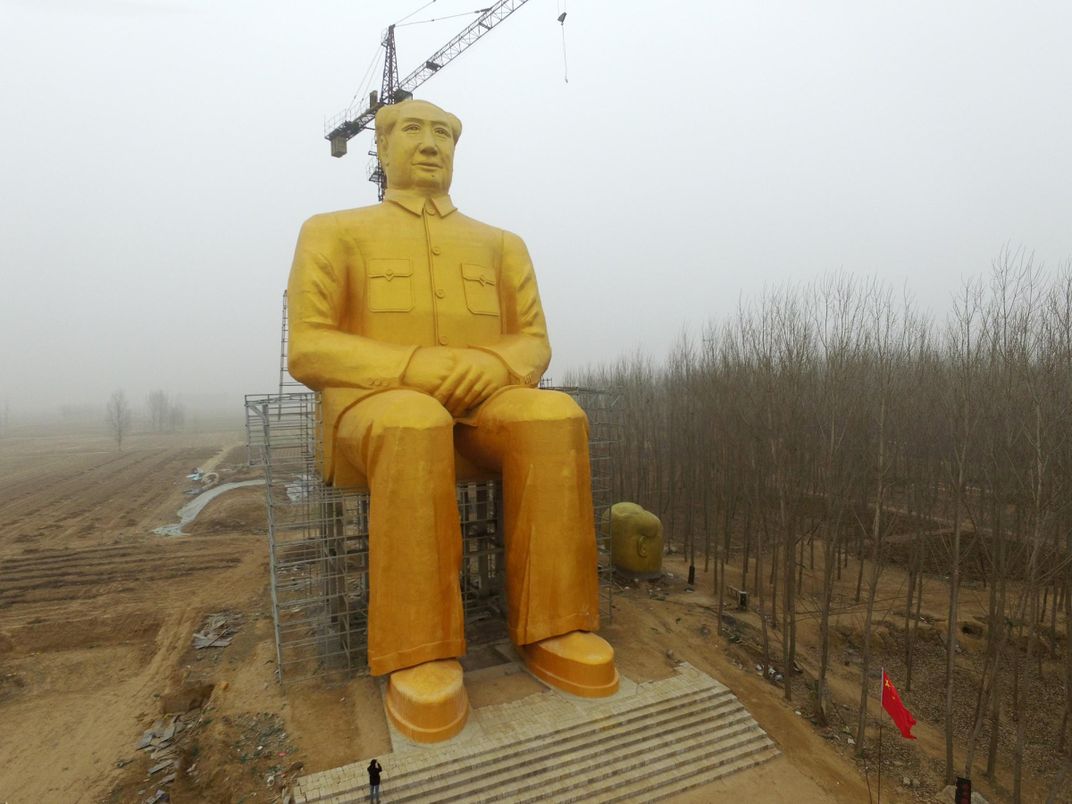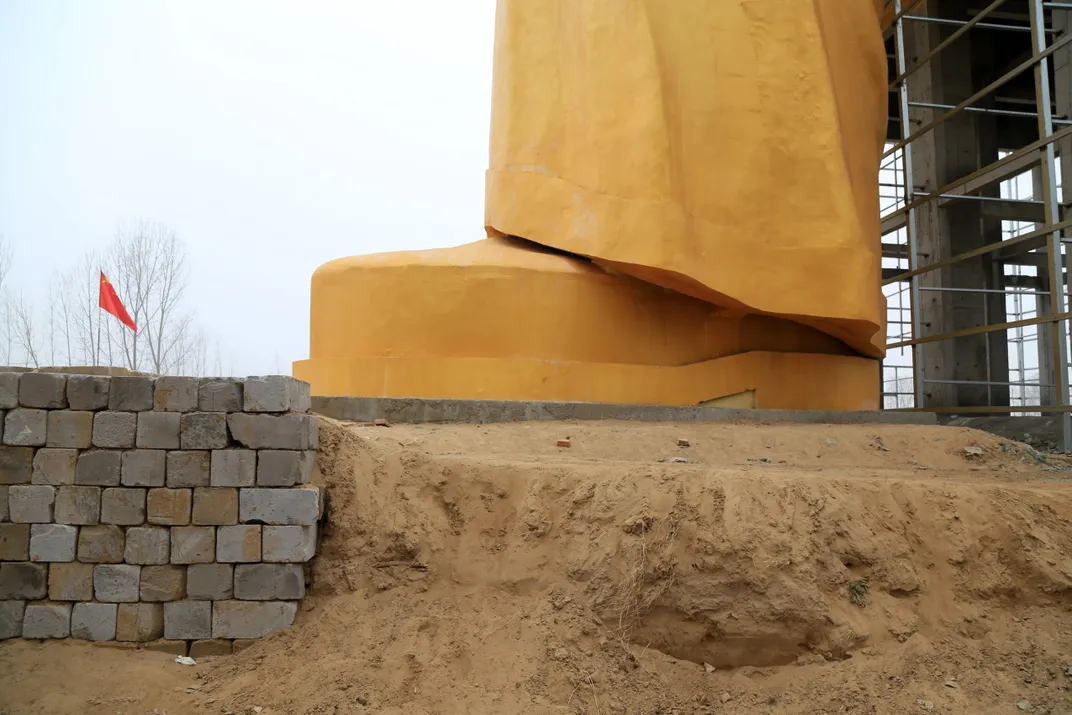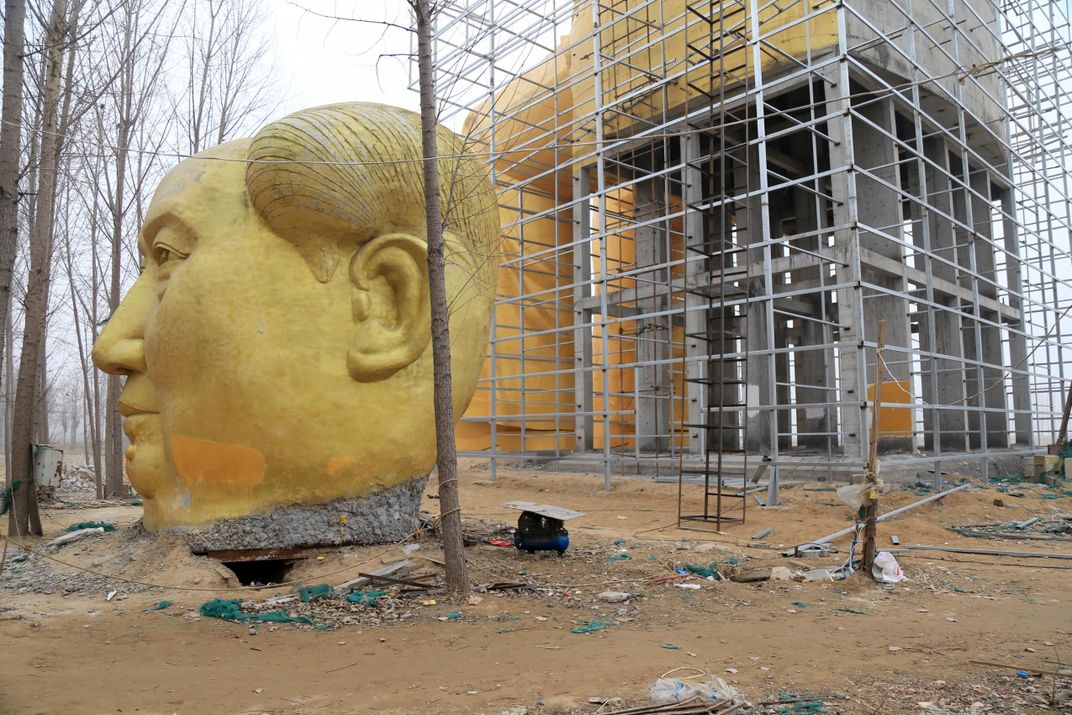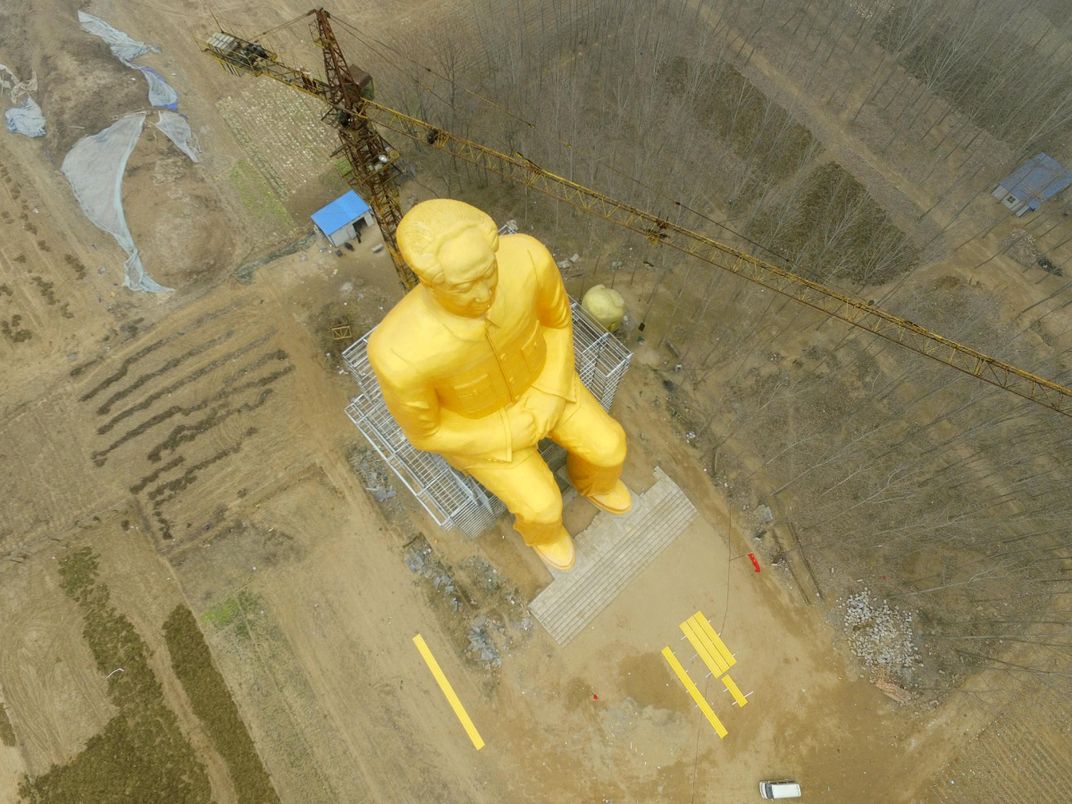Chinese Capitalists Built a Gigantic, Golden Statue of Chairman Mao
Like the Chairman’s legacy, this 121-foot statue is hard to ignore
Mao Zedong is best known for leading the Chinese Cultural Revolution and presiding over China for more than 30 brutal years. But despite being the ultimate symbol of Chinese Communism (and responsible for millions of deaths), he still has plenty of fans among modern-day Chinese capitalists. Now, writes the Agence France-Presse, a group of entrepreneurs in China’s Henan Province have built a 121-foot-tall, golden statue of the leader.
The AFP reports that construction of the statue, which cost an estimated $460,000, took nine months and was reportedly funded entirely by local entrepreneurs. It portrays the chairman lounging on a huge chair with his hands folded in his lap.
That chilled-out image of the leader contradicts with Mao’s reputation of being one of history’s greatest mass murderers. Mao’s Cultural Revolution, which promised to purify Chinese society, was enforced by his "Red Guards" who committed widespread atrocities and killed millions in his name. Other policies added to the staggering death toll, estimated at anywhere from 40- to 70-million, that occured under Mao's reign. In 1958, Mao initiated the “Great Leap Forward,” a five-year plan to industrialize China. Far from modernizing China’s agricultural system, the “Great Leap” backfired: It caused a famine that killed up to 45 million people and was canceled after just three years. At best, historians consider the plan to be poor policy and at worst, a genocide.
Despite this legacy, Mao is still regularly invoked in China as a symbol of progress and strength. Mao’s political theories, writes Javier C. Hernández for the New York Times, are still honored by the Chinese Communist Party as “a guiding ideology,” despite divided public opinion on the leader today.
Like Mao, the statue itself is already controversial: Reuters reports that it’s located in a province that was one of the hardest hit by the famine that Mao's policy engineered. One thing that people can agree on, however, is that like Chairman Mao's own legacy in China, a towering golden statue of him is also hard to ignore.
Update: On January 8, 2016, reports surfaced that the statue was destroyed. The New York Times writes that just two days after being erected, the statue was torn down by unidentified demolition workers, apparently at the behest of the embarrassed local government. Officials did not comment on the demolition.
/https://tf-cmsv2-smithsonianmag-media.s3.amazonaws.com/accounts/headshot/erin.png)




/https://tf-cmsv2-smithsonianmag-media.s3.amazonaws.com/accounts/headshot/erin.png)